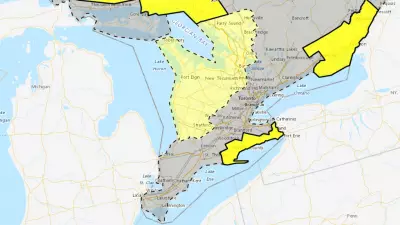
The 2024 wildfire season has left an indelible mark on Ontario's landscape, with newly released government data painting a stark picture of the destruction. According to the Ontario Ministry of Natural Resources and Forestry, wildfires consumed nearly 6,000 square kilometers of provincial land this year—an area larger than Prince Edward Island.
The Scale of Destruction
Official statistics reveal the breathtaking scope of this year's fire season. The ministry reported 741 wildfires burning approximately 5,996 square kilometers across Ontario. This represents a significant increase compared to the 10-year average, highlighting the growing intensity of wildfire seasons in the region.
Massive Firefighting Response
Containing these blazes required an unprecedented mobilization of resources. Firefighting efforts involved:
- Over 1,000 ministry personnel deployed to fire zones
- More than 500 firefighters recruited from across Canada and international partners
- Advanced aerial support including water bombers and surveillance aircraft
- Coordination with municipal fire departments and emergency services
Northern Ontario Bear the Brunt
The northwestern and northeastern regions of the province experienced the most severe impacts, with remote communities and vast wilderness areas particularly vulnerable. These regions faced extended periods of extreme fire risk, driven by dry conditions and favorable fire weather patterns.
Climate Patterns and Fire Behavior
Meteorological conditions played a crucial role in this year's devastating season. Unusually dry spring conditions, combined with periods of high temperatures and low humidity, created ideal circumstances for fire ignition and rapid spread. The ministry emphasized that these patterns align with broader climate trends affecting forested regions across Canada.
Looking Toward Future Seasons
As the 2024 season concludes, officials are already analyzing response strategies and preparing for future challenges. The data collected from this record-breaking season will inform:
- Enhanced early detection systems
- Improved resource allocation protocols
- Community evacuation planning
- Forest management practices to reduce fire risk
The ministry continues to monitor smoldering fires in remote areas while assessing the long-term ecological impact of this historic wildfire season on Ontario's forests and wildlife habitats.





